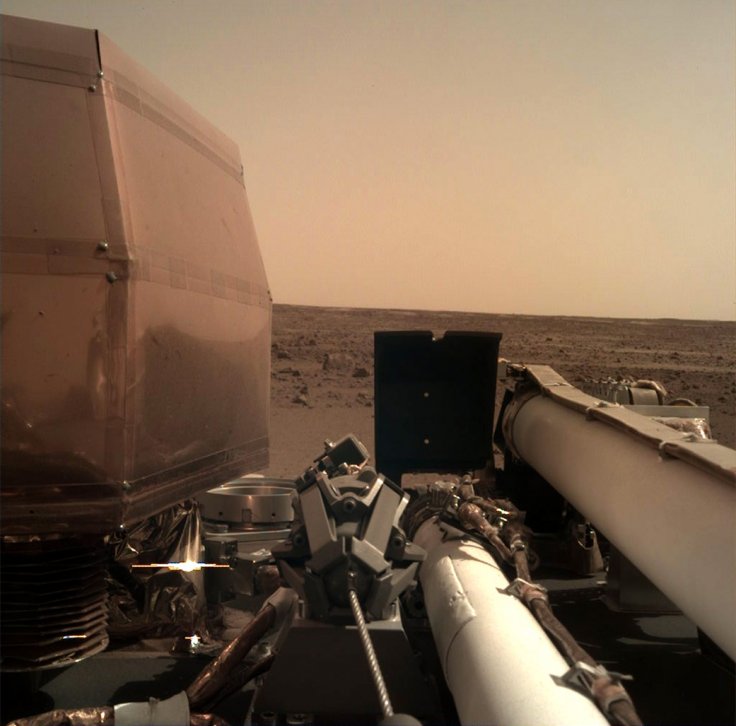
As we all know, in a feat of creating history, NASA has successfully landed InSight on the sandy surface of the Red Planet Mars.
Now, the mission team at the American space agency's Jet Propulsion Laboratory in Pasadena, California, is trying to find out and learn more about the landing site of the rocky planet. According to NASA, InSight had landed on target on November 26, which is a lava plain named Elysium Planitia, as chosen by the experts.
Now, they have come to comprehend that the space vehicle is sitting a little bit tilted, about 4 degrees to be precise, in a "shallow dust- and sand-filled impact crater" named "hollow." However, nothing to worry, as InSight has been designed to function with up to a tilt of 15 degrees.
As per the concerned project manager at JPL, Tom Hoffman, the team of scientists and experts at NASA were hoping to land the vehicle at a sandy area on Mars that had a fewer number of rocks; so they are quite satisfied with the actual result.
"There are no landing pads or runways on Mars, so coming down in an area that is basically a large sandbox without any large rocks should make instrument deployment easier and provide a great place for our mole to start burrowing," added Hoffman.
The landing site is significant in this case because rocks and slopes could affect the ability of InSight's heat-flow probe on the Red Planet's surface. If the vehicle had touched down upon an excessively sloped area in the wrong direction; it could have completely cut off the spacecraft from receiving enough power output from its two solar arrays.
Also, if InSight had landed beside a large rock, it could have prevented the vehicle to open one of its two arrays. In reality, since the landing site was perfect, the lander could deploy both the arrays shortly after landing.
After the science team received InSight's first photographs; they determined that the landing area contains only a few rocks. NASA scientists are expecting to get the higher-resolution images soon.
"We are looking forward to higher-definition pictures to confirm this preliminary assessment. If these few images - with resolution-reducing dust covers on - are accurate, it bodes well for both instrument deployment and the mole penetration of our subsurface heat-flow experiment," said Bruce Banerdt, principal investigator of InSight at JPL.
Once the experts decide the two sites on the Red Planet to deploy the two main instruments; the team will start testing the mechanical arm, which will place the instruments on their selected spots.
Data received from the lander during the first few days also indicates that InSight has produced more electrical power than any other vehicle that had landed on the surface of the Red Planet earlier.
"It is great to get our first 'off-world record' on our very first full day on Mars. But even better than the achievement of generating more electricity than any mission before us is what it represents for performing our upcoming engineering tasks. The 4,588 watt-hours we produced during sol 1 means we currently have more than enough juice to perform these tasks and move forward with our science mission," stated Hoffman.









